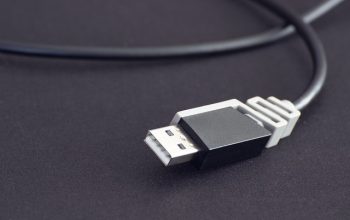navigating the vehicle title transfer process can be a straightforward affair or an intricate maze of paperwork and regulations, depending on one’s preparation and attention to detail. This article serves as a comprehensive guide to seamlessly transfer a car title, whether you’re within your state or crossing borders. By understanding the DMV title transfer requirements and being mindful of the varying title transfer fees and costs across different states, you can avoid common pitfalls that lead to delays and complications. Whether you’re an individual handling a routine transfer or dealing with the complexities of an out-of-state title transfer, this guide will provide the necessary steps and insights to ensure your transaction is completed efficiently and legally. With our step-by-step approach and detailed checklist, you can confidently undertake a how to transfer a car title process, ensuring your vehicle’s ownership transition is as smooth as possible.
- Understanding the Vehicle Title Transfer Process: A Step-by-Step Guide
- Key DMV Title Transfer Requirements to Avoid Delays
- Navigating Title Transfer Fees and Costs Across Different States
- Out-of-State Title Transfers: Bridging the Gap Between Two Jurisdictions
- The Role of a Detailed DMV Title Transfer Checklist in Streamlining Processes
- Common Mistakes to Avoid During the Title Transfer After Car Purchase
- Ensuring Legal Compliance and Documentation Accuracy for Stress-Free Transfers
Understanding the Vehicle Title Transfer Process: A Step-by-Step Guide

Navigating the vehicle title transfer process can be straightforward when equipped with the necessary knowledge and documentation. The DMV title transfer requirements are critical to adhere to, as they ensure a smooth transition of ownership. To initiate the transfer, one must complete a title certificate application form, providing all required personal information and details about the vehicle. This includes the buyer’s and seller’s names, the VIN (Vehicle Identification Number), odometer reading, and lienholder information if applicable. It’s imperative to accurately fill out these forms to avoid any setbacks.
Once the application is submitted, the next step involves submitting the necessary title transfer documents along with the appropriate fees and costs, which vary by state and the type of vehicle being transferred. These fees are non-negotiable and must be settled for the process to continue. Buyers should prepare to pay these promptly to expedite the transfer. Additionally, if the transfer is from an out-of-state title, both the buying and selling states’ laws must be understood and complied with to ensure legality and avoid any penalties or delays. A thorough checklist that includes all DMV title transfer requirements, such as proof of insurance, bill of sale, and emission/inspection certificates, will aid in preventing oversights and ensuring a hassle-free experience. By carefully following these steps and preparing all required documentation ahead of time, the vehicle title transfer process after car purchase can be completed without undue complications.
Key DMV Title Transfer Requirements to Avoid Delays

When initiating a vehicle title transfer process, adherence to the DMV title transfer requirements is paramount to avoid delays. The process begins with the completion of the appropriate forms; failure to submit a correctly filled out application can result in processing hold-ups. Prospective transferees must provide proof of ownership, which typically includes the current title or a bill of sale. Additionally, identification and odometer disclosure are often required to verify the identity of the parties involved and the vehicle’s mileage. It is also essential to handle any liens satisfactorily; an outstanding lien can impede the transfer until it is settled. To navigate title transfer fees and costs without surprise delays, one must be aware that these vary by state and the type of vehicle being transferred. Researching the specific fees in your state beforehand ensures you have the necessary funds or accurate information on acceptable payment methods. For those handling a title transfer after car purchase, especially if it’s out-of-state, understanding both states’ regulations is crucial to comply with all necessary legalities and expedite the process. A comprehensive DMV title transfer checklist serves as an invaluable tool to ensure all requirements are met, thereby smoothing the transition of vehicle ownership and avoiding unnecessary complications.
Navigating Title Transfer Fees and Costs Across Different States

When navigating the vehicle title transfer process across different states, understanding the varying DMV title transfer requirements is paramount. Title transfer fees and costs can differ significantly from one state to another, influenced by factors such as the type of vehicle being transferred and the specific state regulations. For instance, a car title transfer after purchase in one state might be accompanied by a nominal fee, while another state could assess a higher charge that includes additional taxes or documentary stamps. This variability underscores the importance for individuals to research and plan accordingly, as overlooked fees can delay the completion of the transfer and potentially result in penalties or lapsed registration. To avoid such complications, it’s advisable to consult official state DMV websites or contact local DMV offices directly for the most accurate and up-to-date information on title transfer fees and costs specific to their situation. By being well-informed and prepared, vehicle owners can ensure a smooth transition of ownership and maintain compliance with legal requirements post-purchase.
Out-of-State Title Transfers: Bridging the Gap Between Two Jurisdictions

When transferring a vehicle title from one state to another, individuals must navigate the complexities of two distinct jurisdictions. The vehicle title transfer process is subject to both federal and state regulations, which can vary significantly. To successfully complete an out-of-state title transfer, it’s imperative to understand the specific requirements for your originating and receiving states. This includes familiarizing yourself with the DMV title transfer requirements in each jurisdiction, as they dictate the necessary paperwork, documentation, and fees involved. For instance, you must obtain the correct forms, such as a Bill of Sale or a Transfer of Title form, and ensure that all information is accurate to avoid delays. Additionally, title transfer fees and costs can differ by state, and in some cases, by vehicle type, so it’s crucial to be aware of these expenses beforehand. Proper planning and attention to detail are key to bridging the gap between these two jurisdictions efficiently. A comprehensive checklist tailored to your specific situation can serve as a valuable tool, guiding you through each step of how to transfer a car title after a purchase, and ensuring that all aspects of the process are addressed without oversight. This proactive approach minimizes the risk of complications, streamlines the transfer, and helps maintain compliance with both states’ laws throughout the process.
The Role of a Detailed DMV Title Transfer Checklist in Streamlining Processes

When navigating the vehicle title transfer process, a comprehensive DMV title transfer checklist serves as an indispensable tool to streamline and expedite the transition of car ownership. This checklist acts as a roadmap, guiding individuals through each step of the procedure with precision. It ensures that all DMV title transfer requirements are met without oversight, which can otherwise lead to costly delays. The checklist typically outlines essential documentation such as proof of ownership, bill of sale, and identification, as well as any lienholder information if applicable. By having a clear list of what is needed for the transfer, individuals can avoid the common mistake of submitting incomplete paperwork or omitting critical forms.
Title transfer fees and costs vary significantly depending on the state and type of vehicle being transferred. A detailed checklist will highlight these expenses, allowing buyers to budget accurately and avoid unexpected financial burdens. Additionally, for those handling an out-of-state title transfer, understanding the specific laws and processes of both their current and new states is paramount. The checklist aids in this process by providing a step-by-step guideline tailored to interstate transfers, ensuring compliance with each state’s regulations. With the help of a well-organized DMV title transfer checklist, individuals can facilitate a smooth transition, saving time and reducing stress associated with how to transfer a car title after a car purchase. This is particularly beneficial for first-time vehicle owners or those who have not undertaken a title transfer in some time. The checklist minimizes the risk of errors and oversights, leading to a more efficient and hassle-free experience when updating car ownership records at the DMV.
Common Mistakes to Avoid During the Title Transfer After Car Purchase

When purchasing a vehicle, completing the vehicle title transfer process accurately is paramount to avoid delays and ensure compliance with DMV title transfer requirements. A common oversight among new vehicle owners is failing to promptly notify their insurance company of the change in ownership. This can lead to lapses in coverage or coverage for the wrong vehicle, which is not only a financial risk but also a legal one. Another frequent mistake is overlooking the expiration dates on forms and documents, leading to rejection of the application and the necessity to resubmit with updated information. It’s crucial to pay close attention to the DMV title transfer requirements specific to your state and vehicle type, as these can vary significantly.
Title transfer fees and costs are an often-overlooked aspect that can catch buyers off guard if they are not familiar with their state’s regulations. These fees differ by location and may include additional charges such as sales tax or recording fees. To navigate this smoothly, it’s advisable to research the title transfer fees and costs ahead of time. This due diligence not only prevents unexpected expenses but also ensures that all paperwork is complete before submission. For those handling a title transfer after car purchase from an out-of-state dealer or private seller, understanding both states’ laws is essential. A thorough review of the DMV title transfer requirements for both jurisdictions will facilitate a smoother transition and adherence to legal mandates. Creating a checklist with all necessary steps, forms, and fees will aid in a successful title transfer after car purchase and help avoid common pitfalls associated with this process.
Ensuring Legal Compliance and Documentation Accuracy for Stress-Free Transfers

To navigate the vehicle title transfer process successfully, adherence to DMV title transfer requirements is paramount. Legal compliance is not just a formality; it’s a safeguard that ensures the transfer of ownership is recognized and valid across all states. The process begins with accurately completing the necessary forms, which vary by jurisdiction but typically include a title application and bill of sale. It’s essential to provide information such as the correct vehicle identification number (VIN), odometer disclosure, and lienholder information if applicable. Overlooking these details can lead to unnecessary delays or even rejection of your application. Moreover, understanding and paying the appropriate title transfer fees and costs is a critical step. These fees differ by state and can encompass registration fees, titling fees, and any applicable sales tax based on the vehicle type and previous use. To avoid surprises, research these costs ahead of time and include them in your budget for transferring a car title post-purchase.
A comprehensive checklist tailored to your specific state’s DMV title transfer requirements can serve as a guide, reducing the likelihood of errors and omissions. This checklist should prompt you to gather all necessary documentation, including proof of insurance, identification, and residency if required. Additionally, it’s important to ensure that all forms are filled out correctly, with no blank spaces and accurate information regarding the seller and buyer. By being meticulous in your preparation and attentive to every detail, you can facilitate a stress-free transfer and avoid the common pitfalls associated with the DMV title transfer process.
When navigating the vehicle title transfer process, adherence to DMV title transfer requirements is paramount. Overlooking seemingly minor details can lead to unexpected delays, as evidenced by the common pitfalls detailed in this article. From understanding the nuances of title transfer fees and costs that vary by state and vehicle type, to ensuring a smooth out-of-state title transfer, a comprehensive approach is essential. The provided checklist serves as an invaluable tool for those looking to transfer a car title or handle such transactions post-car purchase. By following the outlined steps and heeding the advice offered, individuals can confidently complete the process legally compliant and documentation accurate, thus avoiding potential complications. For clarity and ease, remember that a meticulous checklist is your ally in the vehicle title transfer process, ensuring a hassle-free experience and peace of mind.



